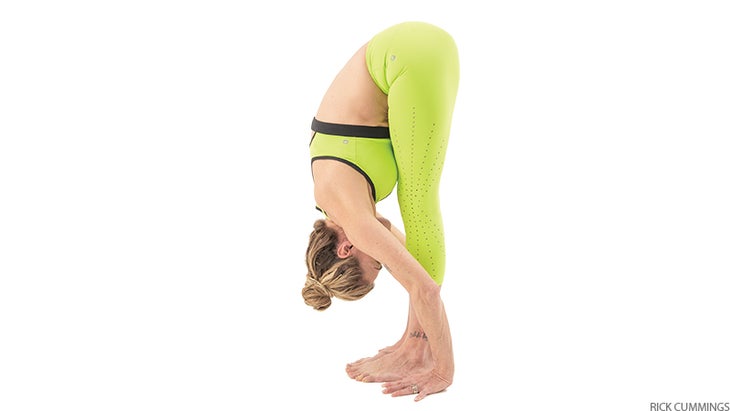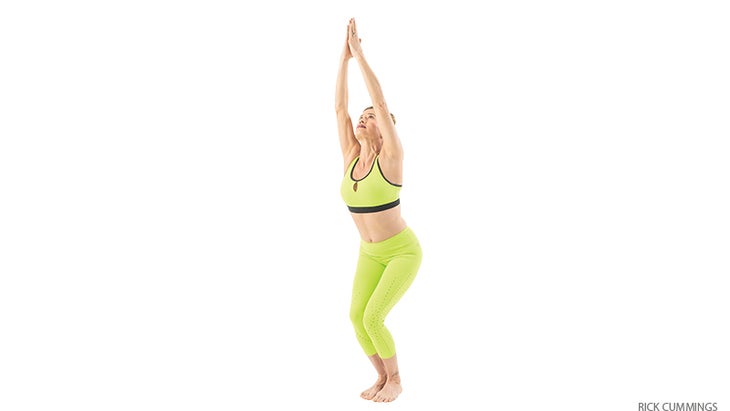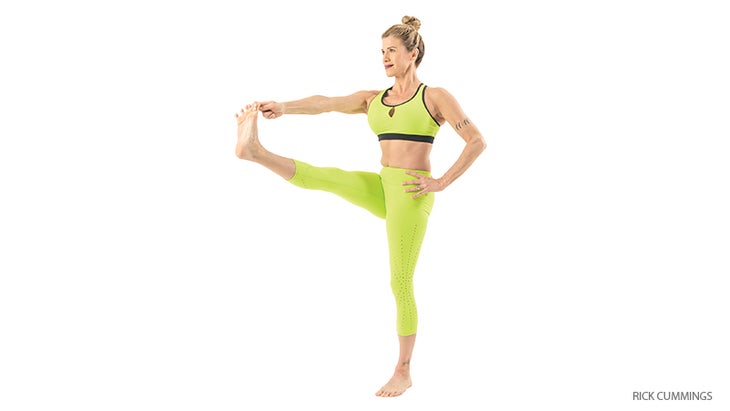Heading out the door? Read this article on the new Outside+ app available now on iOS devices for members! Download the app.

Sometimes the smallest adjustment makes all the difference in how comfortable and stable you feel in a yoga pose. Consider your big toes, for example. You may think they function unconsciously, especially during tasks such as balancing on one foot. But paying more attention to, and adjusting, your big toes during asana practice can revolutionize your alignment and balance, instilling a calming sense of groundedness. For instance, the next time you are in Uttanasana (Standing Forward Bend), notice where the weight in your feet is. Many of us practice with our hips back and our weight in our heels. This prevents you from stacking your bones in a way that allows you to stabilize, and could strain your hamstring attachments at the pelvis. But a simple, mindful big-toe adjustment can create stability in the bones, ligaments, and muscles of the feet, enhancing the mind-body connection and creating a secure foundation for safe and comfortably aligned poses.
So how does the anatomy work? Muscles in your big toes support the ligaments and bones that make up your arches. Healthy arches (as opposed to fallen ones) act like shock absorbers, transmitting kinetic forces, or the forces of motion, up through the ankles to the knees and up the kinetic chain of the body, potentially causing issues with alignment, joint health, and muscle strength. For example, weak big-toe flexors, the muscles that bend the toe, may change the strength and effectiveness of your largest glute muscle, gluteus maximus. And the glute max is critical in supporting most poses. For the big-toe muscles to do their job well, protecting your body from impact and instability, they need to be dynamically stable, meaning they should respond to shifts in movement, weight, and balance.
The good news is that you can train your big toes. In a pose like Standing Forward Bend, evenly press the fleshy part of the big toes into the mat. Do not grip the toes; instead, imagine you are gently pressing a button with them. This button-pressing action can strengthen the big-toe flexors to awaken the kinetic chain of muscles on the back of the leg and bring the hips into alignment above the ankles. After you strengthen your big-toe flexors, you’ll want to stretch them using poses like Chaturanga Dandasana (Four-Limbed Staff Pose) and Adho Mukha Svanasana (Downward- Facing Dog Pose). Both stretching and strengthening exercises are needed to maintain dynamic stability in the toes.
Getting more familiar with the anatomical structures in the soles of the feet, also called the plantar surface, will help refine your awareness of how to engage the big toes. Your big toe is comprised of two joints: The metatarsophalangeal (MTP) joint connects the long bone (metatarsal) of the front of the foot with the first bone in the big toe (phalanx). It forms the mound at the base of the sole of the big toe. The interphalangeal (IP) joint is the big-toe knuckle. Capsules (ligamentous sacs that enclose joints) and ligaments cover and cross both joints, providing static stability.
Finally, let’s look at how these joints move. Flexing your big toe is governed by two muscles: the flexor hallucis longus (FHL) and the flexor hallucis brevis (FHB). They are assisted by the abductor and adductor hallucis muscles. The FHL originates in the deepest part of the back of the lower leg, under the calf, and connects via tendon around the bottom of the foot to the base of the IP joint. The FHB flexes the MTP joint. All of these muscles support your arches. Lightly pressing down with the big toe maintains stability in the MTP joint and activates the kinetic chain of muscles from the soles of the feet to the hamstrings and glutes. While you can’t change the ligaments, capsules, and bones consciously, you can work on moving the muscles to build strength and stability in standing balance poses.
See alsoAnatomy 101: Understand Your Quadratus Lumborums (QLs)
4 Poses to Tap Your Toes’ Power
Try the yoga postures below for building strength and mobility in the muscles supporting the big toes, then observe the shifts in your perception of feeling rooted and balanced.
Standing Forward Bend, variation

Uttanasana
From Tadasana (Mountain Pose), inhale to lengthen your spine, then exhale to hinge from the hips to fold. When the pelvis drifts back in this pose in yoga class, the teacher often will come by and gently push it forward to align the legs perpendicular to the floor. When the teacher walks away, the pelvis tends to drift back again. Correct this yourself by gently pressing the fleshy part of the big toes into the mat, which can help bring your femurs into a more upright position over your ankles. Then press the outside edges of your feet into the mat to activate your arches. You should feel grounded. Hold for 5 to 10 breaths before returning to Mountain Pose.
See alsoAnatomy 101: Understand Your Pectoralis Minor
Chair Pose, or Fierce Pose

Utkatasana
With your big toes together and heels slightly apart, inhale to extend your arms along your ears and bend your knees, lowering your glutes into Chair Pose. Press the fleshy part of the big toes down, then add the outer edges of the feet to balance the arches. Work your way up the body, pressing the knees together (all while holding the action in the feet), then engage the buttocks. Note how this connects the big toes to the core, through the kinetic chain of muscles and fascia, or connective tissue, from the soles of your feet through the back of the legs. Hold for 5 breaths.
See also Anatomy 101: Understand + Prevent Hamstring Injury
Extended Hand-to- Big-Toe Pose

Utthita Hasta Padangusthasana
Stand in Mountain Pose. Balancing on your left foot, elevate your right knee. Wrap your right index and middle fingers around the right big toe and actively flex your toe against your fingers as you slowly work to straighten your leg. Bring your awareness to the connection of your right big-toe flexor’s origin on the back of the lower right leg. This pose actively strengthens and stretches your big-toe muscles. Hold for at least 5 breaths before switching sides.
See also Anatomy 101: Understanding Your Sacroiliac Joint
Four-Limbed Staff Pose

Chaturanga Dandasana
This is a counterpose to stretch the toe flexors, especially the FHB. Come to Plank Pose and slowly lower down, making sure your elbows are over your wrists, your upper arms are parallel to the floor, and that your shoulders don’t dip lower than your elbows. Reach back through the heels and make sure you are stacking them over your toes, and that your toes are curled under. Then press your big toes down to rock forward, loading the stretch. Go slowly, and if you experience pain in the MTP joint, back off a bit. Hold for 5 breaths before releasing.
See alsoAnatomy 101: 8 Poses to Strengthen Your Wrists + Prevent Injury